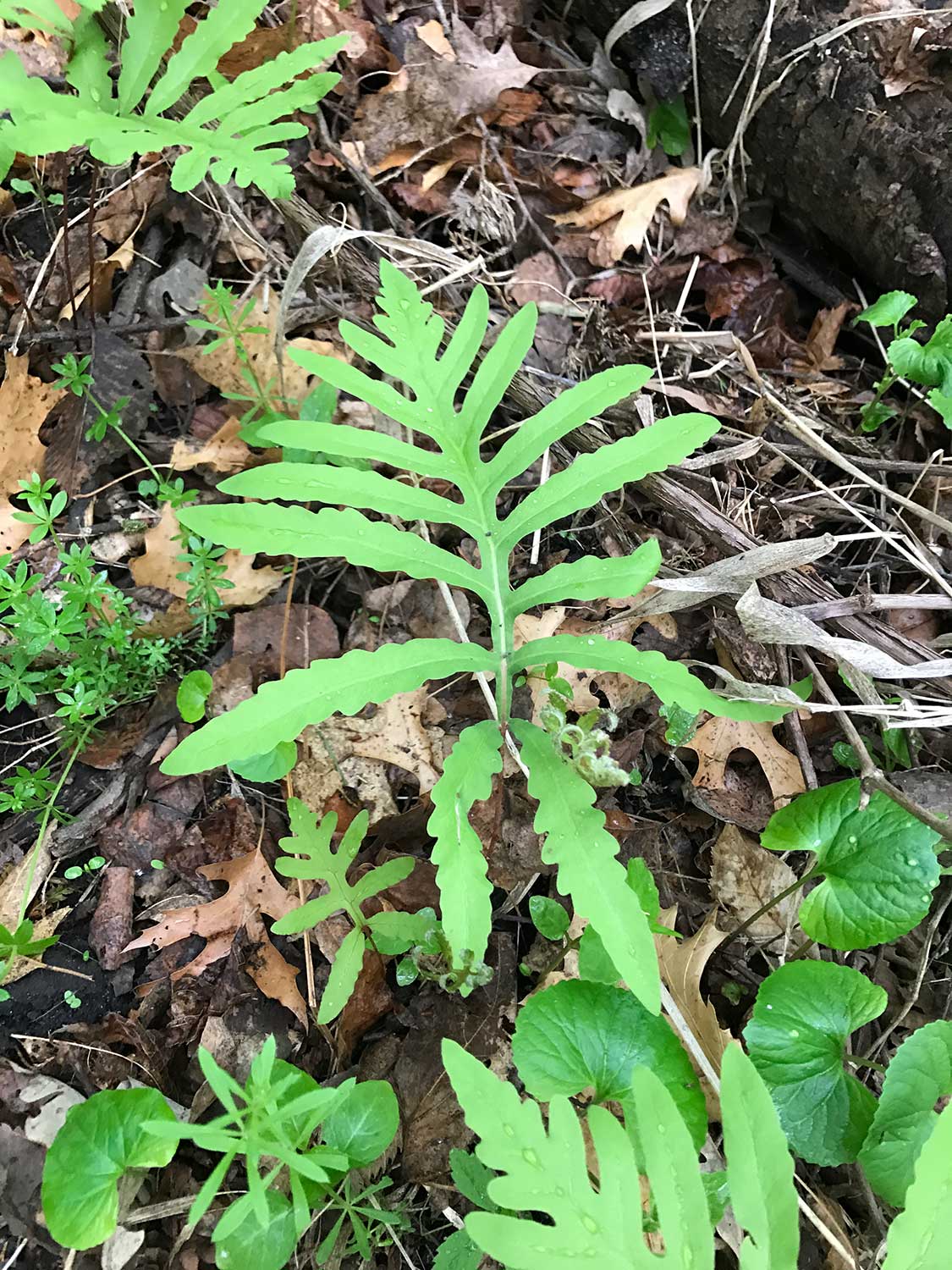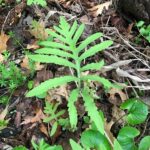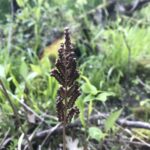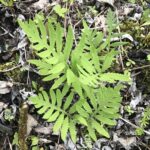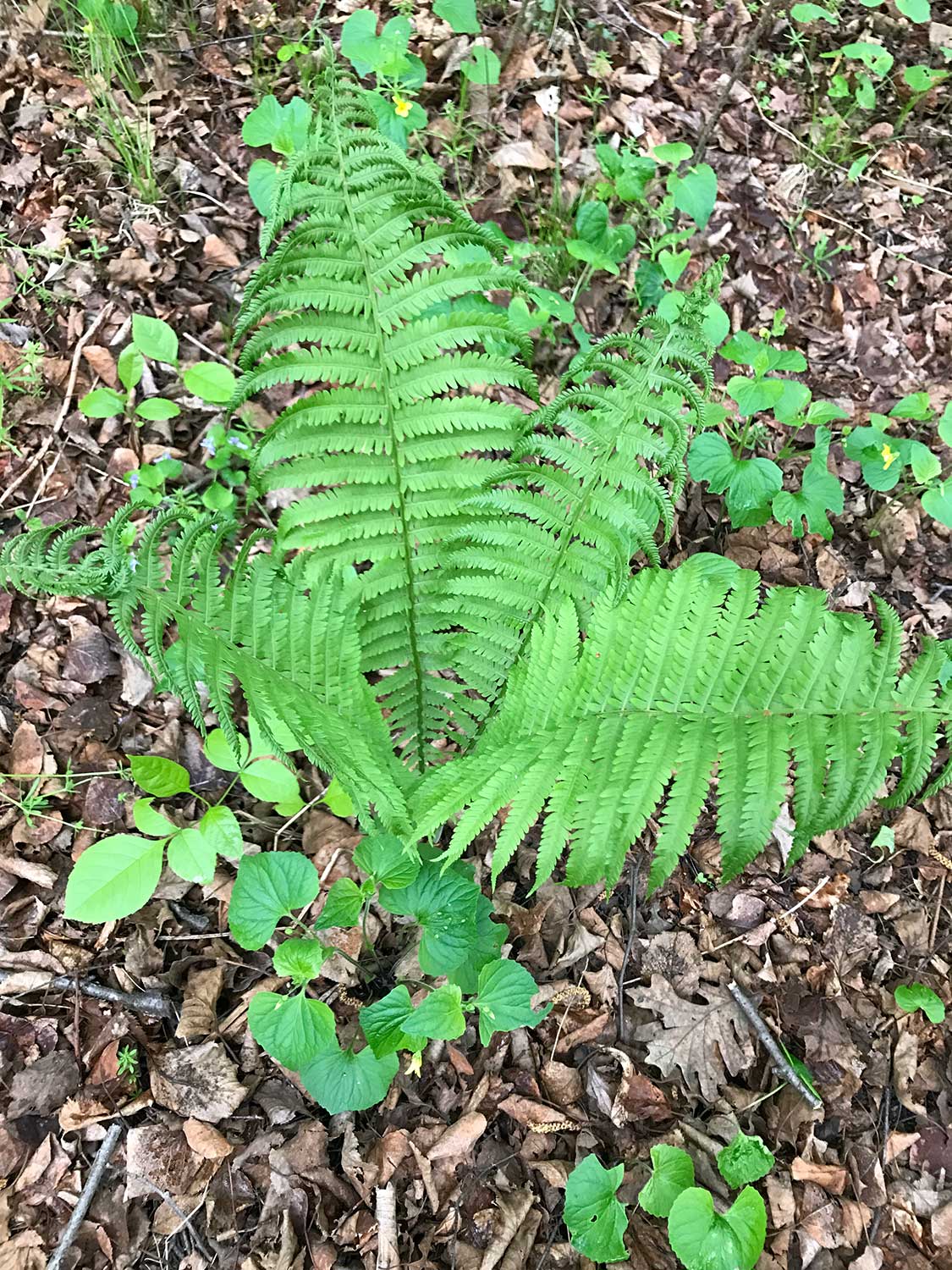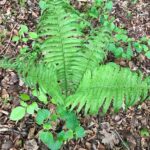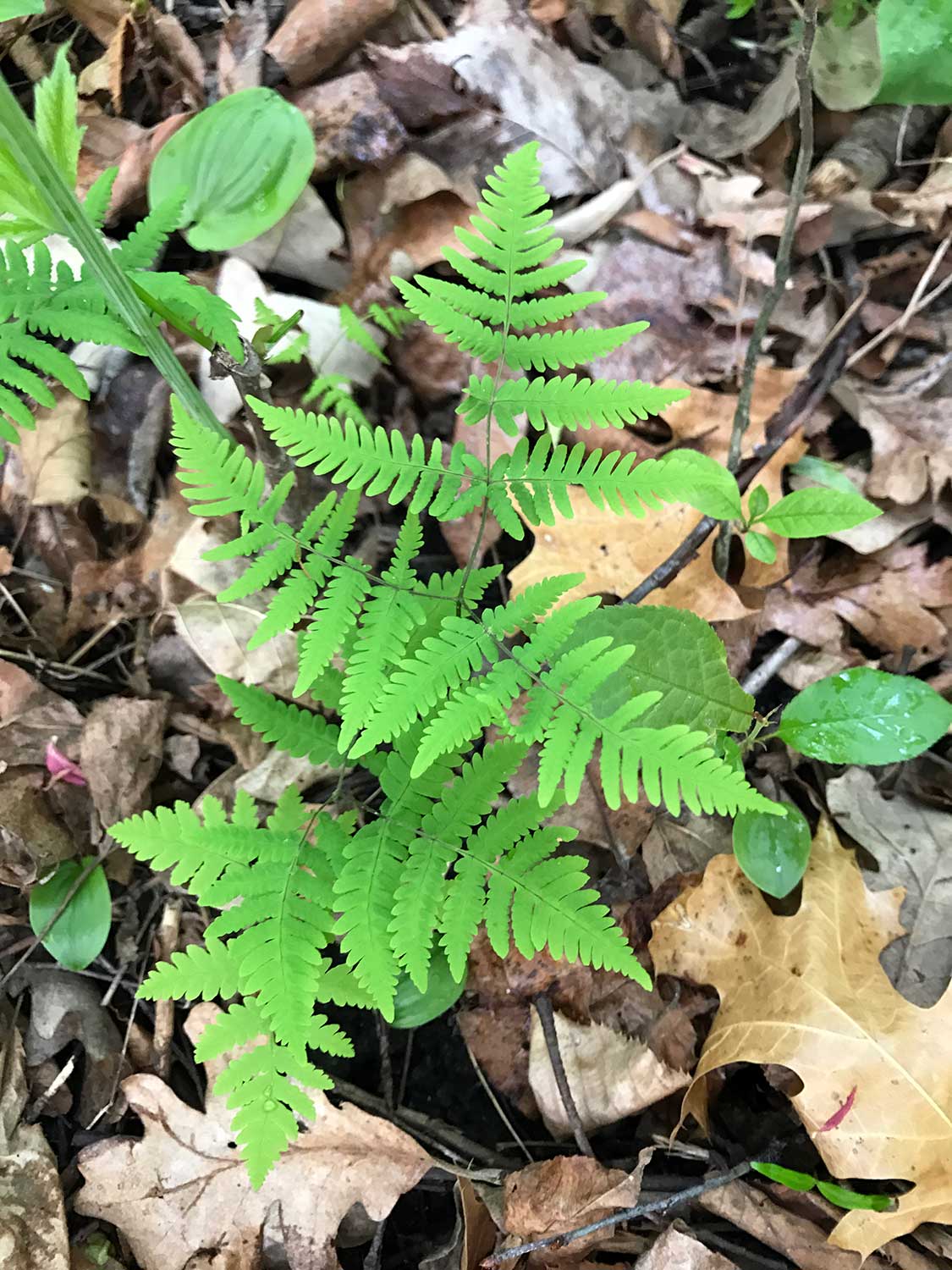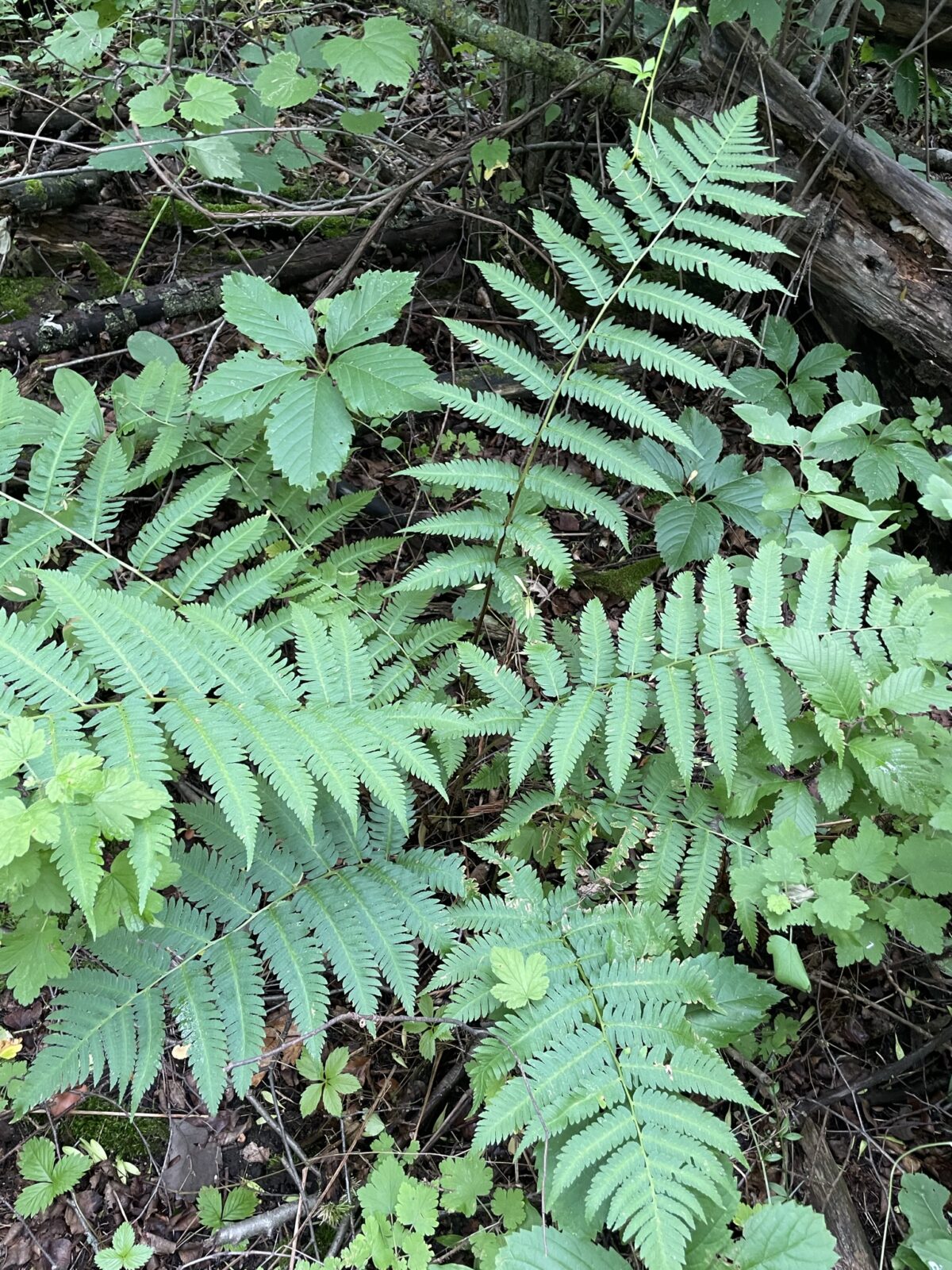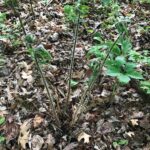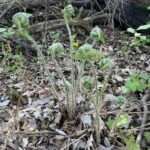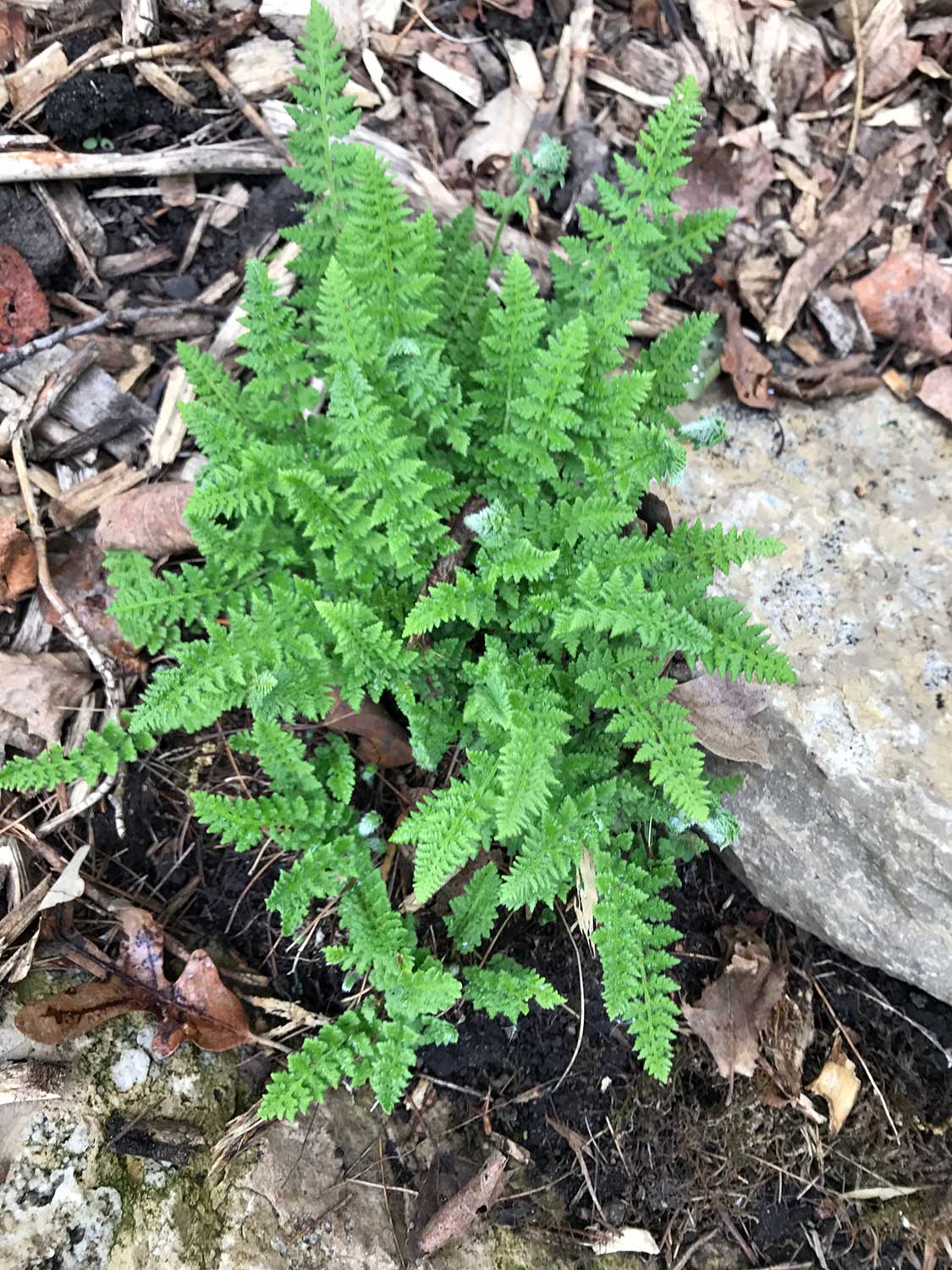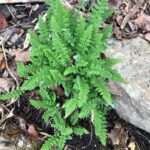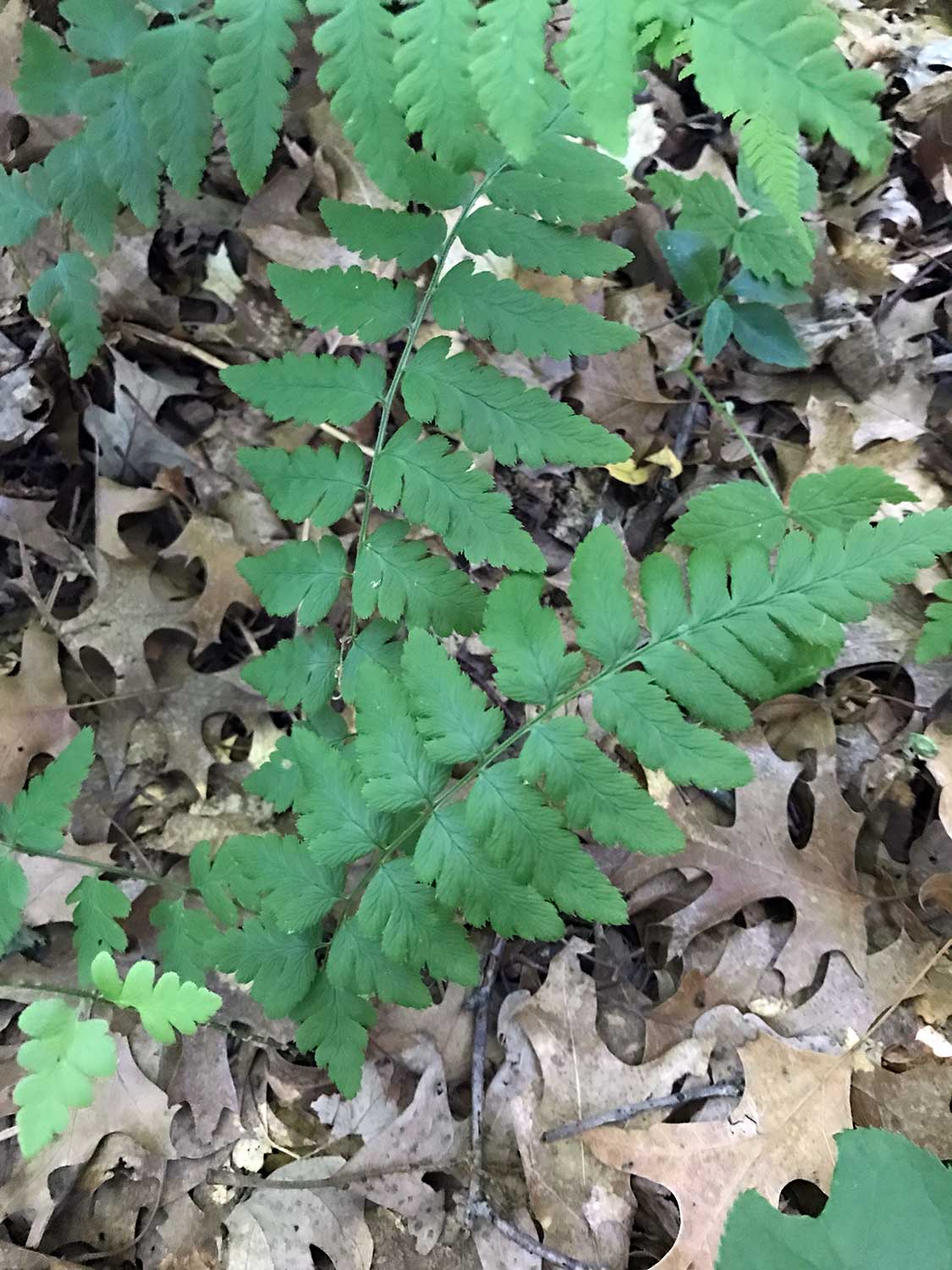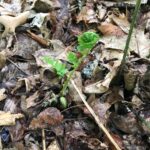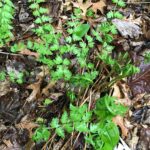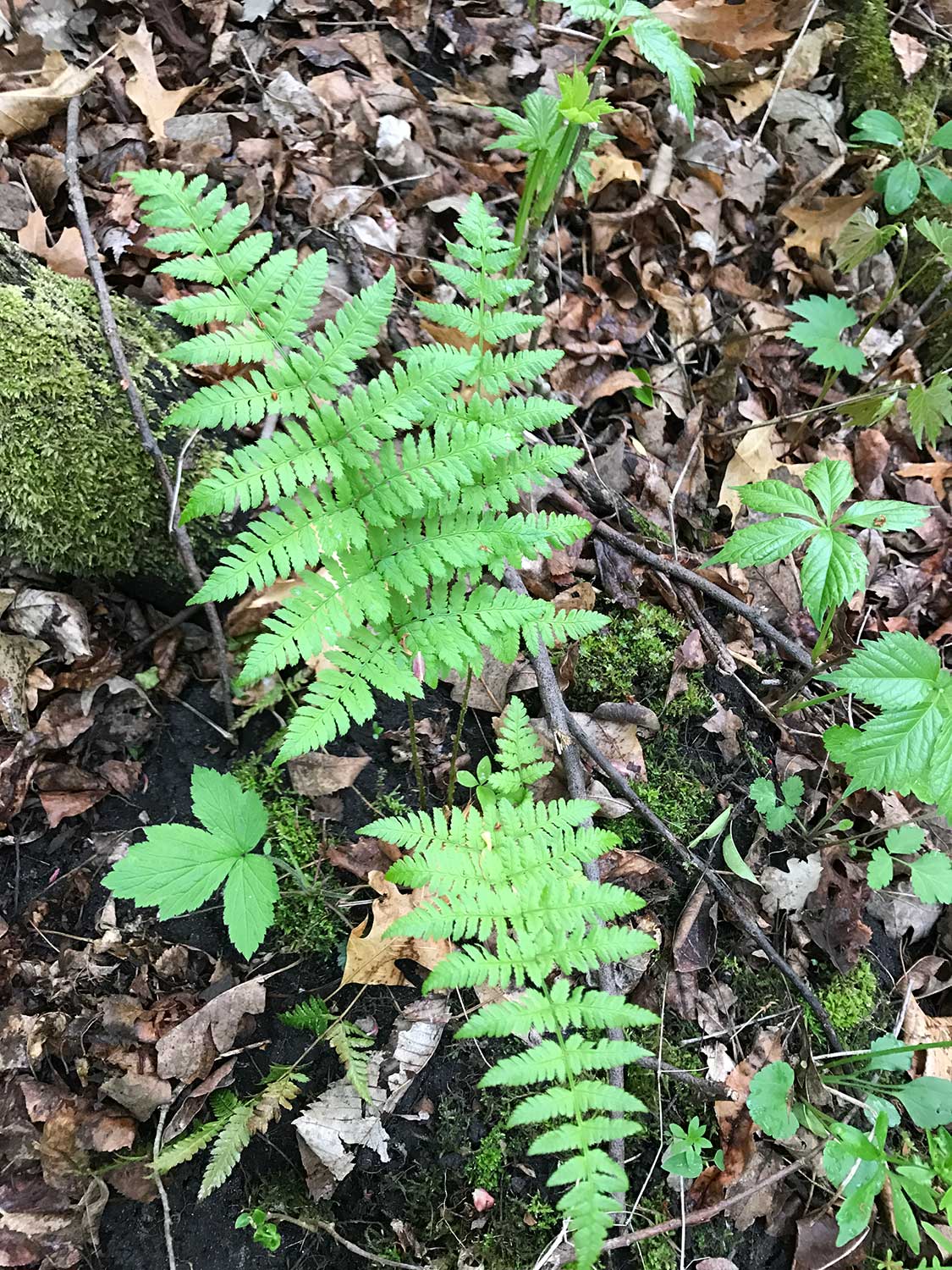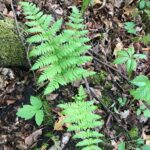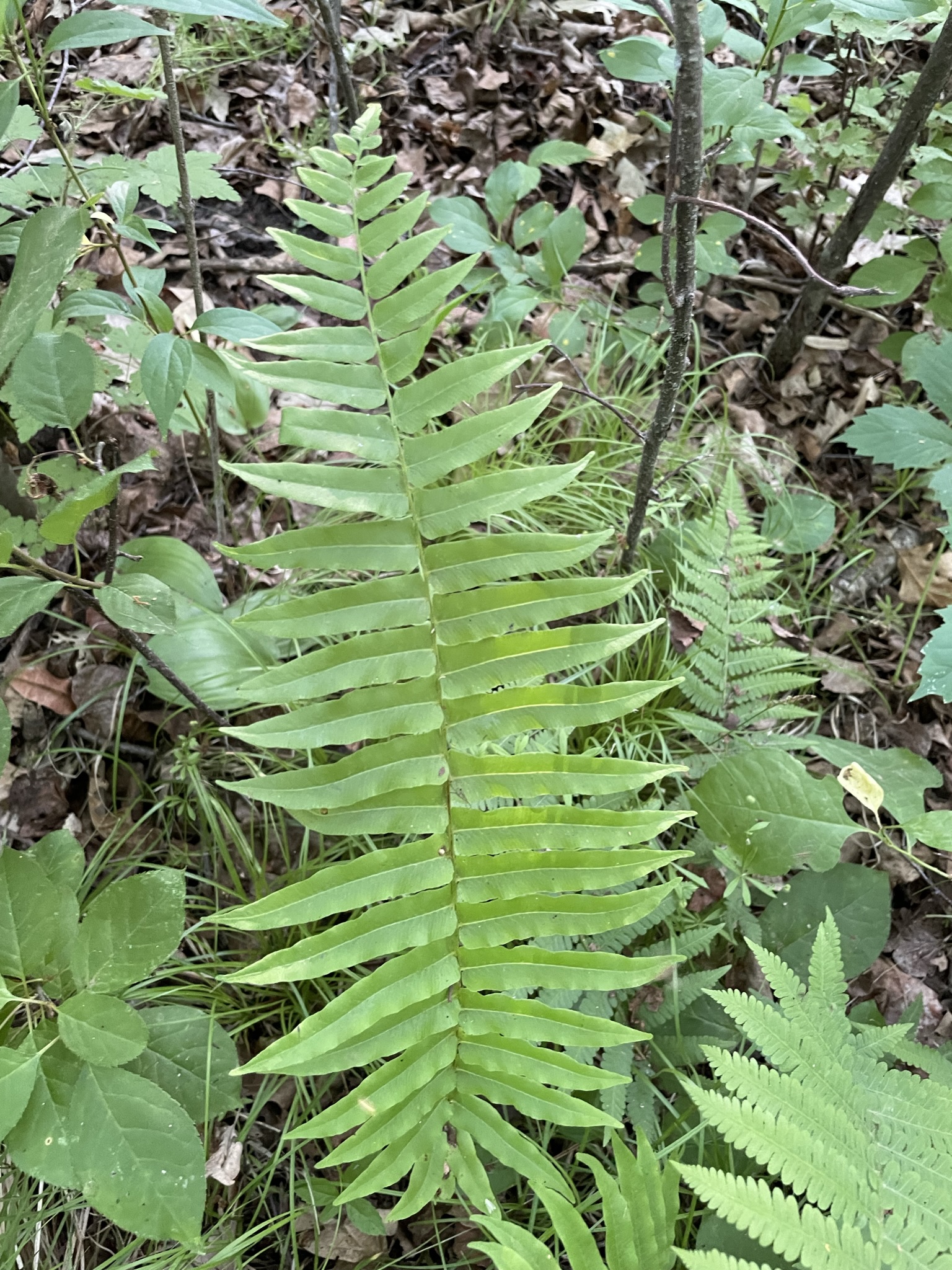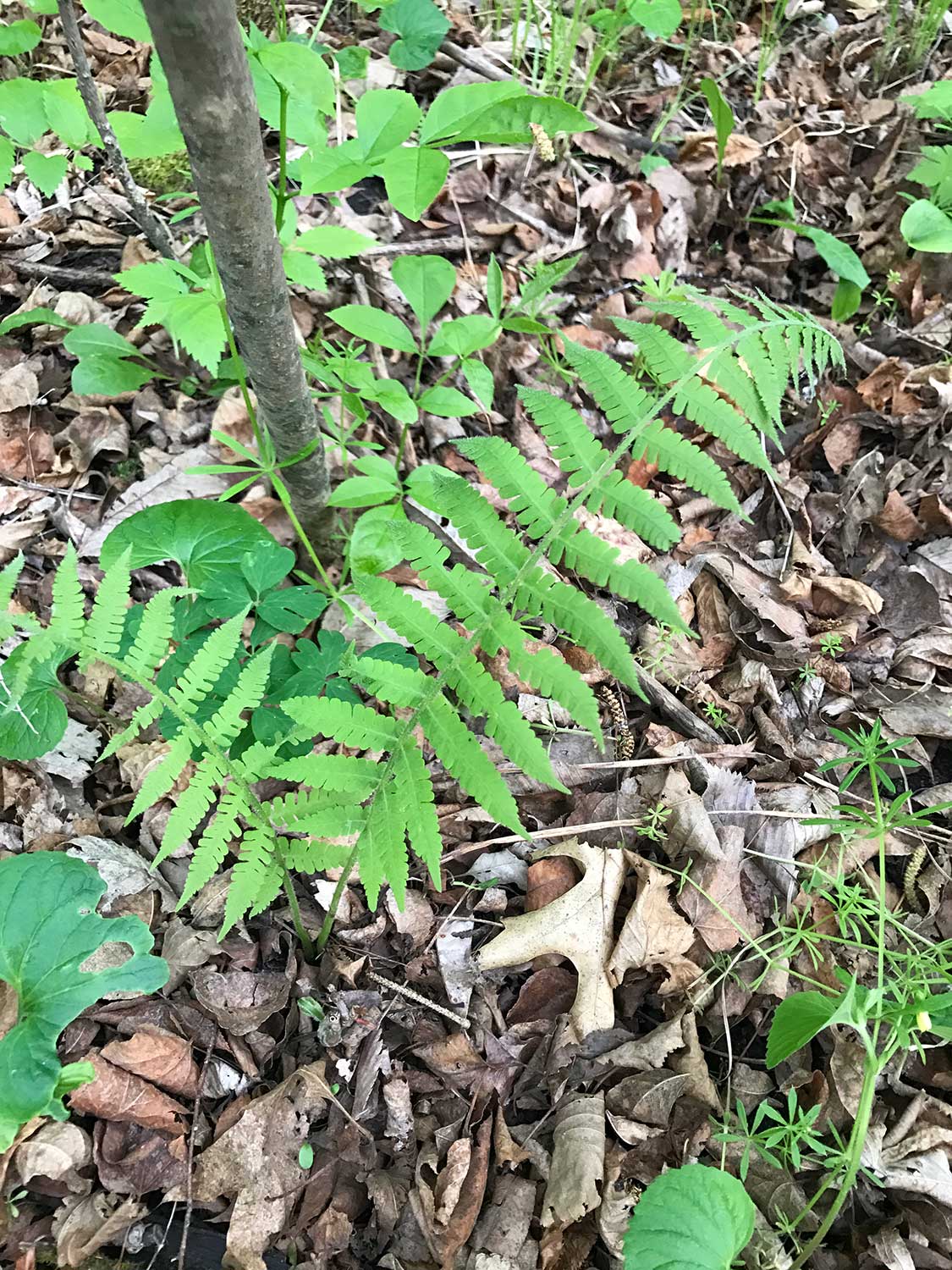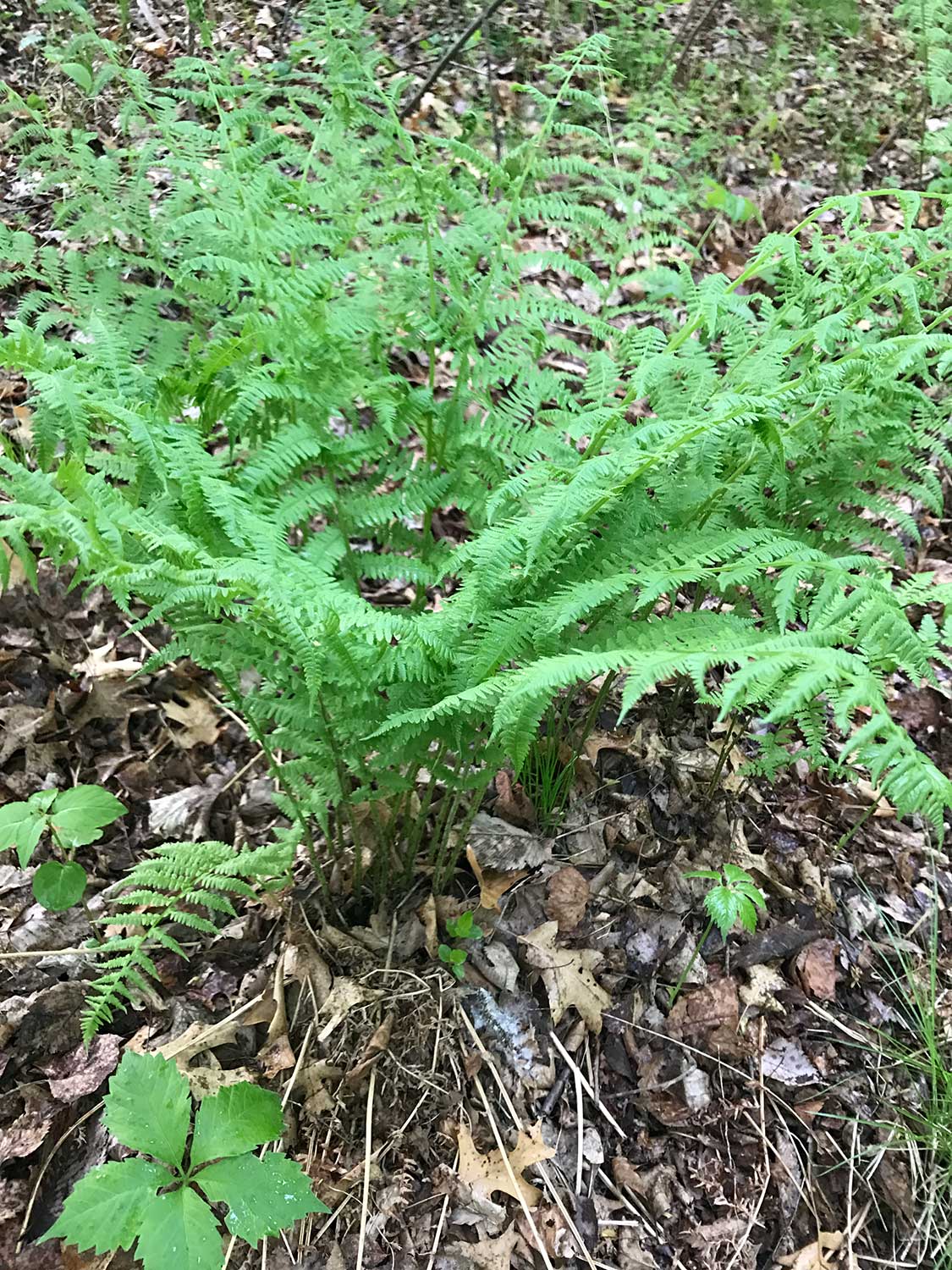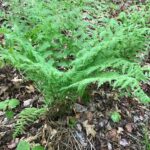Native To State: YES
Naturally Occurring: YES
Description
Matteuccia struthiopteris (Ostrich Fern) is a large and striking fern species belonging to the Onocleaceae family. Here are some key identification characteristics:
Appearance: Ostrich fern is a tall and imposing fern that can reach heights of 2 to 6 feet (60 to 180 centimeters). It has a distinctive vase-shaped growth habit.
Fronds: The fronds of Matteuccia struthiopteris are large and pinnately compound, meaning they are divided into leaflets along a central rachis (stalk). The fronds have a feather-like appearance, with each leaflet being lance-shaped and finely dissected.
Fiddleheads: One of the most recognizable features of ostrich fern is its fiddleheads, which are tightly coiled and emerge in the spring. These young, tender fronds unfurl into the larger, mature fronds.
Frond Color: The fronds are typically bright green, adding a lush and vibrant touch to the landscape.
Sori: On the undersides of the fronds, you can find small, brown, bead-like structures called sori. The sori are arranged in two rows on each side of the midrib of each leaflet.
Habitat: Ostrich fern is native to various regions of North America and can be found in a variety of habitats, including moist woodlands, stream banks, and wet meadows. It prefers rich and consistently moist soils.
Distribution: The species is found in regions ranging from northern Canada to the northeastern and central parts of the United States.
Conservation: Ostrich fern is not considered a threatened species, and its striking appearance makes it a popular choice for ornamental plantings.
Other Species: Matteuccia struthiopteris is part of the Matteuccia genus, which includes other fern species with similar characteristics.
Ostrich fern is admired for its commanding presence and graceful fronds, making it a favored choice for shaded gardens, woodland landscapes, and even wetland areas. Its fiddleheads are considered a culinary delicacy in some regions and are harvested for culinary use when young and tender.
Occurrence
Multiple specimens found along fern walk and on the western side of the former pastured woods.

